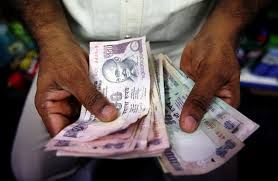 The rupee saw its biggest single-day decline in more than a month on Tuesday as investors covered short dollar positions following a Federal Reserve study, while losses in the domestic share market also hurt sentiment.
The rupee saw its biggest single-day decline in more than a month on Tuesday as investors covered short dollar positions following a Federal Reserve study, while losses in the domestic share market also hurt sentiment.
The dollar scaled a six-year peak against the yen and hit a 14-month high against a basket of currencies on Tuesday, tracking rising U.S. yields after a Federal Reserve study led investors to reassess prospects for higher interest rates.
The Fed's easy monetary stance has sparked big foreign inflows into emerging markets, including India, but a return to normalcy could reduce these flows and hurt the rupee. Foreign funds have bought a net $32.1 billion worth of debt and shares so far this year.
On the domestic front, investors will focus on factors such as the consumer inflation data due on Friday as well as the Reserve Bank of India policy review at the end of the month.
The trade data for August is also due to be released between Sept. 8 and Sept. 12 although
"The rupee mainly tracked the movement in other Asian units against the dollar. There was some corporate dollar sales initially but later heavy demand from state-run banks weighed," said Pramod Patil, assistant vice president at United Overseas Bank.
Traders broadly expect the pair to hold in a 60.20 to 60.95 range during the rest of the week.
The partially convertible rupee ended weaker at 60.60/61 versus Friday's close of 60.29/30. The unit fell 0.5 percent on the day, its biggest single-day loss since Aug. 6.
Most other Asian currencies weakened against the dollar.
Hopes that foreign flows would continue after the weak U.S. jobs data on Friday had helped the rupee climb to 60.20 on Monday, its strongest level since July 30.
Traders do not expect much appreication in the currency as the central bank is likely to limit sharp gains, keeping the unit in a broad 59.50 to 61.50 range over the next three months, they said.
In the offshore non-deliverable forwards, the one-month contract was at 60.99 while the three-month was at 61.56.










